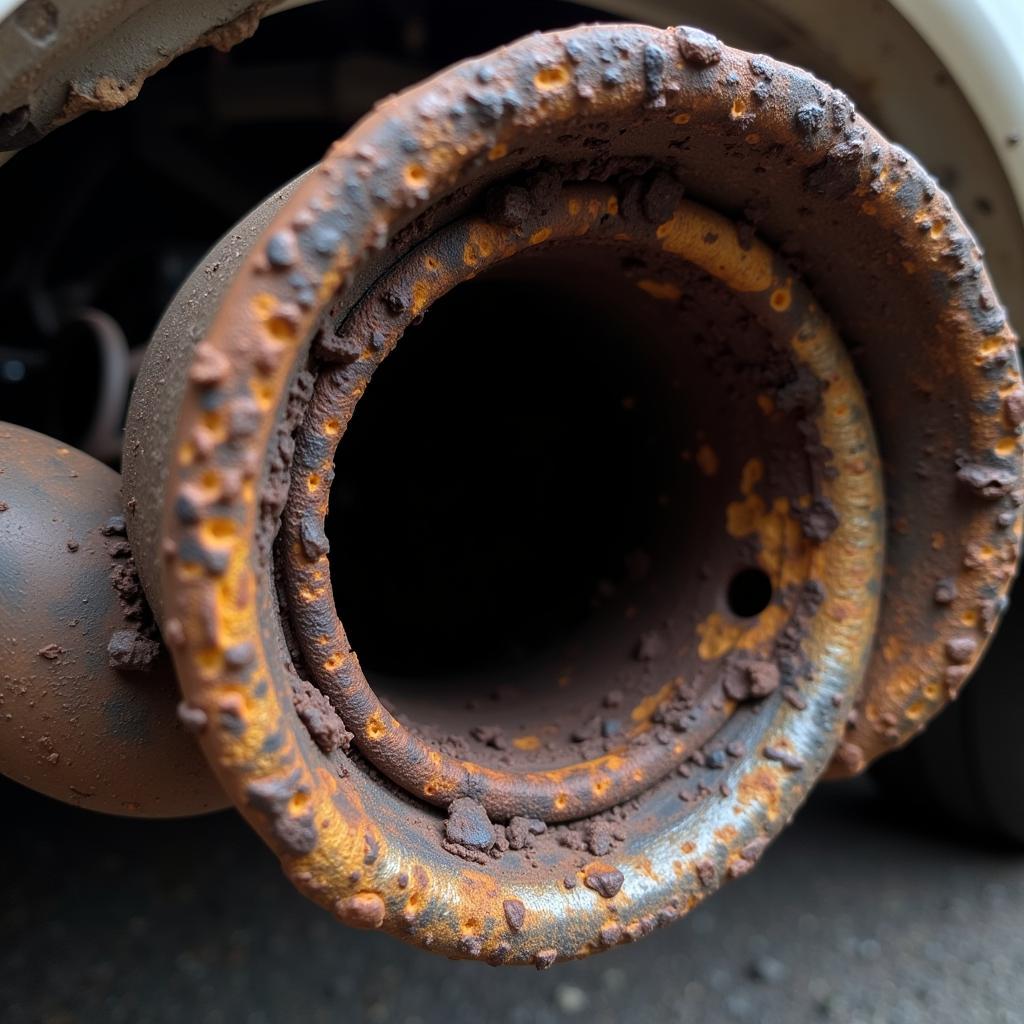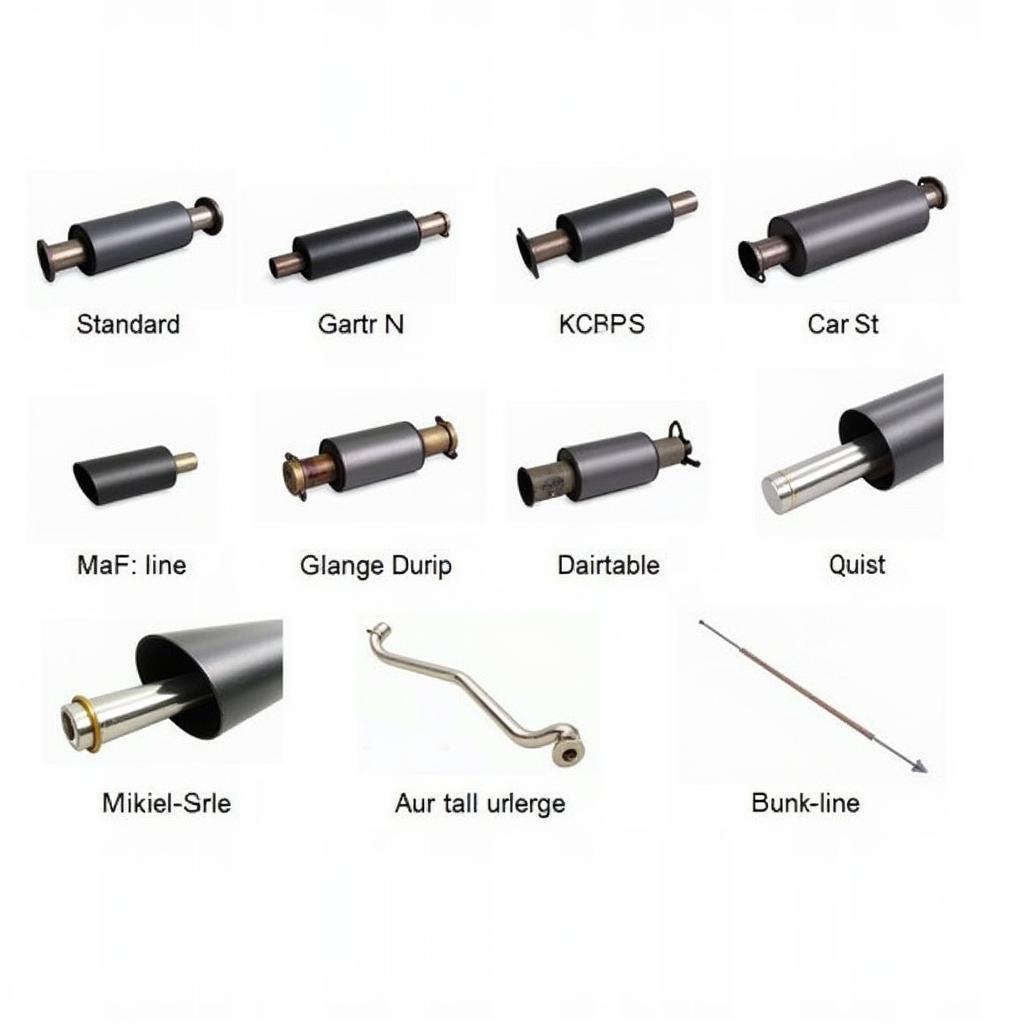A faulty car silencer can be more than just an annoyance. It can signal underlying issues with your exhaust system, impacting your car’s performance and even posing environmental risks. Knowing how to repair a car silencer can save you money and ensure your vehicle runs smoothly. This guide covers everything from diagnosing the problem to carrying out the repair, empowering you to tackle this common car issue.
Identifying Car Silencer Problems
Before you start any repair, pinpointing the exact issue with your silencer is crucial. A rumbling noise is the most common symptom of a faulty silencer. However, other signs include reduced engine performance, a noticeable smell of exhaust fumes inside the car, and visible holes or rust on the silencer itself.
Common Silencer Issues
- Holes or Cracks: These are often caused by rust and corrosion and are a major source of noise.
- Loose Parts: Internal components of the silencer can become loose, causing rattling and other unusual sounds.
- Rust and Corrosion: Over time, exposure to the elements can lead to significant rust and corrosion, weakening the silencer and eventually causing it to fail.
- Damaged Pipes: The pipes connecting to the silencer can also become damaged, leading to leaks and noise.
 Car Silencer Rust and Damage
Car Silencer Rust and Damage
Repairing Your Car Silencer
Depending on the severity of the damage, you can either repair your car silencer or replace it entirely. Minor holes and cracks can be repaired using a silencer repair kit, which typically includes a high-temperature sealant and reinforcing bandage. For more extensive damage, replacement is often the more practical solution.
Using a Silencer Repair Kit: A Step-by-Step Guide
- Prepare the Surface: Clean the area around the hole or crack thoroughly, removing any loose rust and dirt.
- Apply the Sealant: Apply the high-temperature sealant to the damaged area, ensuring it covers the entire hole or crack.
- Wrap the Bandage: Secure the sealant with the reinforcing bandage, wrapping it tightly around the affected area.
- Allow to Dry: Allow the sealant to dry completely before starting your car.
Replacing the Silencer
Replacing the silencer involves removing the old one and installing a new one. This may require some basic mechanical skills and tools. While it’s possible to do it yourself, it’s often easier and more efficient to have a professional mechanic handle the replacement.
Choosing the Right Silencer
If you opt for replacement, choosing the right silencer for your car is essential. Ensure compatibility with your vehicle’s make and model. Consider factors such as performance, sound level, and durability when selecting a new silencer.
Types of Car Silencers
- Standard Silencers: These offer a balance of performance and sound reduction.
- Performance Silencers: Designed to enhance engine performance, often with a louder exhaust note.
- Quiet Silencers: Prioritize noise reduction for a quieter ride.
“Choosing the right silencer can significantly impact your driving experience,” says John Miller, a seasoned automotive engineer. “Consider your priorities, whether it’s performance, quietness, or longevity.”
 Different Types of Car Silencers
Different Types of Car Silencers
Preventing Future Silencer Problems
Regular maintenance can help prevent future silencer issues. This includes inspecting the exhaust system for rust and damage, and addressing any problems promptly. Protecting your car from the elements, such as by parking in a garage, can also extend the life of your silencer.
“Preventive maintenance is key to a healthy exhaust system,” adds Sarah Johnson, a leading automotive technician. “Regular checks and prompt repairs can save you money and hassle in the long run.”
Conclusion
Learning how to repair a car silencer can be a valuable skill for any car owner. By understanding the common problems, repair options, and preventive measures, you can keep your car running smoothly and avoid costly repairs. Addressing silencer issues promptly not only enhances your vehicle’s performance but also ensures a quieter and more environmentally friendly ride.
FAQ
-
How often should I inspect my car silencer? It’s recommended to inspect your car silencer at least once a year or more frequently if you live in an area with harsh weather conditions.
-
Can I drive with a damaged silencer? While you might be able to drive for a short period with a slightly damaged silencer, it’s not recommended. A damaged silencer can lead to further damage to the exhaust system and can also be illegal in some areas.
-
How much does it cost to replace a car silencer? The cost varies depending on the make and model of your car and the type of silencer you choose.
-
What tools do I need to repair a car silencer? For minor repairs, you’ll typically need a silencer repair kit, gloves, and safety glasses. For more extensive repairs or replacement, specialized tools may be required.
-
How long does a car silencer typically last? The lifespan of a car silencer can vary depending on driving conditions and maintenance, but they typically last several years.
Possible Situations You Might Encounter
- Rattling Noise: This could indicate a loose internal component within the silencer.
- Loud Roaring Noise: This suggests a hole or crack in the silencer body.
- Reduced Engine Performance: A clogged or damaged silencer can restrict exhaust flow and negatively impact engine performance.
Related Articles & Questions
- How to Choose the Right Exhaust System for Your Car
- Understanding Car Exhaust System Components
- Common Car Exhaust Problems and Solutions
Need Help? Contact us via WhatsApp: +1(641)206-8880, or Email: [email protected]. Our customer support team is available 24/7.

Leave a Reply